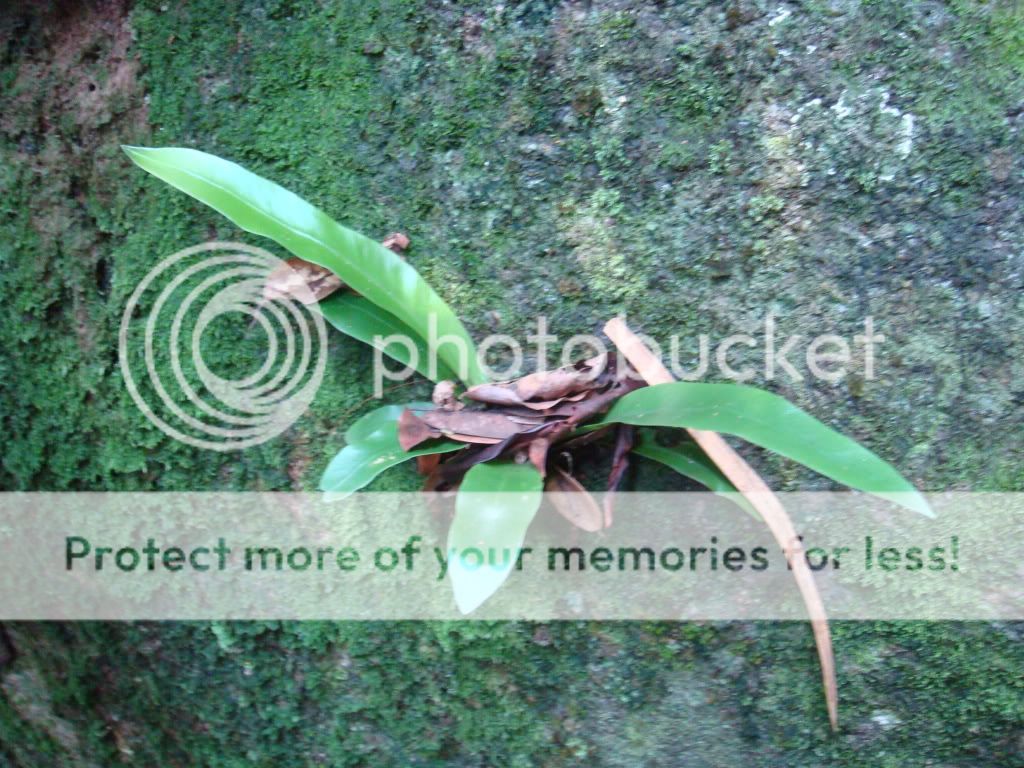 Back in June I posted a couple of photos of some epiphytic ferns growing within trees at the Lis Na Ree resort at Kampung Sungai Ular. Epiphytes are plants that grow on other plants (usually trees) or objects such as rocks.
Back in June I posted a couple of photos of some epiphytic ferns growing within trees at the Lis Na Ree resort at Kampung Sungai Ular. Epiphytes are plants that grow on other plants (usually trees) or objects such as rocks.There are many species of plants that can be epiphytic (grow as epiphytes), including ferns, orchids, and bromeliads. Without true root systems, epiphytes must obtain their nutrients prim
 arily from rainwater and the underlying plant or rock stratum upon which they are attached. Tropical rainforests are particularly beneficial for the consistency of the conditions: temperature, humidity, light and rainfall.
arily from rainwater and the underlying plant or rock stratum upon which they are attached. Tropical rainforests are particularly beneficial for the consistency of the conditions: temperature, humidity, light and rainfall.The epiphytes in these three photos are growing on the side of some large granite boulders. These are considered lithophytes since they grow on rocks (lithos is Latin for stone). The epiphytes create their own micro-environment by forming a cup-like shape pointing upwards and collecting dead leaves which fall from above. Within this natural compost, water and nutrients will collect that both fall from the sky and forest canopy, or else run down along the rock face.

The second photo clearly shows the tough, brown roots (called adventitious or aerial roots) that extend from node to node. They are, in fact, quite like the stolons on strawberry plants that allow plants to develop when a new node touches soil, plant or rock stratum (called propagative roots). These are held onto the rock face probably by chemical excretions that act like cement.
Some plant species have a type of aerial root that contains an epidermis called velamen radicum. These root systems have abundant dead and empty cells that store water (like a sponge) during times of rainfall. Without such a structure, these plants would quickly dry out upon their rock face home during periods of no rainfall.














No comments:
Post a Comment